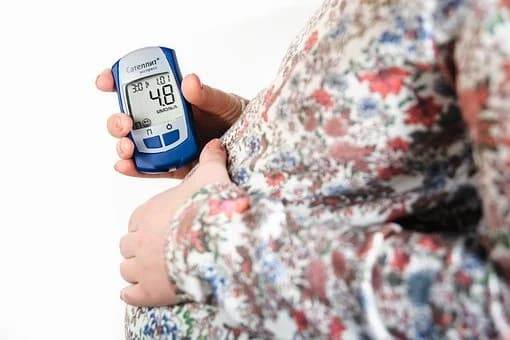The Three Types Of Diabetes
There are three types of diabetes, type 1, type 2 and gestational diabetes. Each type has a different cause and different severity of symptoms. But all forms of diabetes are dangerous if not treated. With proper management though, people with diabetes can live a long, healthy, normal life.
Type 1 Diabetes

People who have type 1 are known as insulin-dependent. Type 1 diabetes mellitus is typically found in children and young adults. Generally, its symptoms include increased thirst and urination, extreme fatigue, weight loss and constant hunger. However, it can appear at any age and symptoms can develop over a short period of time. It is also termed juvenile diabetes. It is the most common form of diabetes in children with ninety to ninety-five percent of carriers being under 16.
In the last 30 years the number of juvenile diabetes had increased three times over and in Europe and the US. It is believed that a mixture of genetics and environmental factors are what triggers juvenile diabetes. But the majority of children don’t have a family history of diabetes.
Type 1 Diabetes is an autoimmune disease, which means the bodies own defense system attacks the body’s tissues or organs. In the case of type 1 diabetes, the system attacks the insulin producing cells and destroys them. Therefore the pancreas can produce little to no insulin. These people are in need of daily injections of insulin to live. Five to ten percent of diabetes cases are type 1 in the US.
A person who is diagnosed with type 1 diabetes must receive insulin shots daily to replace the insulin the body is not producing properly, along with careful blood glucose monitoring. Scientists are not exactly sure why the body attacks the immune system and the production of insulin, but it is believed that both genetics and viruses are involved.
If a person with type 1 diabetes is not diagnosed and treated with insulin, there is a risk that person could slip into a diabetic coma that may prove life threatening. The key when first diagnosed with type 1 diabetes is to arm yourself with information. Being diagnosed is not the end of the world. In fact, most people go on to live normal, healthy lives as long as they stay aware of their condition and continue to treat it.
Doctors should consider the possibility of diabetes in children who have unexplained stomach pains for a few weeks, along with the typical symptoms. If you believe your child may be experiencing these symptoms you should schedule them for a thorough examination and tell your doctor what you suspect your child may have. Be sure to tell them about any and all symptoms your child may be experiencing.
After being diagnosed with diabetes, it is important to maintain your general health paying special attention to the care you give your eyes, feet and skin as well as your heart and oral health. This basic care could prevent complications brought on by diabetes later in life. Other recommendations are to stop smoking and reduce the amount of alcohol you consume.
Type 2 Diabetes
Type 2 diabetes is the most common form found in the US. Ninety to ninety-five percent of people diagnosed with diabetes have this type. Usually developed later in life, it is most commonly diagnosed in people over the age of fifty-five, but in many cases as young as forty or even younger. This is because eighty percent of people diagnosed with type 2 diabetes are overweight. With obesity at an all time high, the diagnoses for type 2 diabetes is also at an all time high.

In type 2 diabetes, the pancreas is still producing insulin, but for some unknown reason, the body is not able to utilize it effectively. As a result, just as in type 1 diabetes, type 2 people develop a dangerous buildup of glucose in the blood, and the body is not able to utilize it for fuel. People who have type 2 diabetes may see their symptoms develop over time. They are not usually as noticeable as the type 1 symptoms.

Symptoms include fatigue, frequent urination, especially throughout the night hours, unusual thirst, weight loss, frequent infections and slow healing sores. In fact, sores may never heal and if not treated it is common for people to have limbs amputated. This usually occurs in the legs, feet and toes. Also as with type 1, if the symptoms go untreated and insulin is not administered when necessary, the patient runs the risk of slipping into a diabetic coma, which can be fatal. It is important if you have any symptoms of type 1 or 2 diabetes you speak with a health professional and get tested.
Gestational Diabetes
Gestational diabetes is a disorder in which women that previously did not carry diabetes test positive for high blood glucose levels during their pregnancy.

Though not uncommon, it is thought that anywhere between three and ten percent of pregnant women are diagnosed with gestational diabetes sometime during their pregnancy. But just what does this diagnosis mean to the health and welfare of the mother and her unborn child? Since no specific cause has been identified for gestational diabetes, scientists don’t know how to prevent it. The closest they have come to understanding is that it is believed that hormones produced during pregnancy reduce a woman’s sensitivity to insulin and the result is high blood sugar levels.
Every pregnant woman is tested for gestational diabetes during her prenatal care visits because generally there are very few symptoms. If the mother has gestational diabetes, babies are at a higher risk for complications. These are typically growth abnormalities and low blood sugar. The good thing is that gestational diabetes is completely reversible and women who otherwise have good control over their glucose levels can decrease the risk of these birth problems. In fact, women who can keep their gestational diabetes under complete control are known to give birth to perfectly healthy babies.
The down side is women who develop gestational diabetes during their pregnancy now run a higher risk of developing type 2 diabetes post-pregnancy. Some children are prone to develop childhood obesity and develop type 2 diabetes later in life. Pregnant women who develop gestational diabetes are generally treated with diet modification and exercise, but in some extreme cases they are administered an anti-diabetic drug, such as insulin. The goal of treatment is to reduce the risks for both m other and child without endangering either.

Hey Chef, just a couple points. The estimated prevalence of Diabetes is 14-16% in TnT. and we have been seeing Type 2 Diabetes in teenagers, folks in their 20’s and 30’s with increasing frequency in the last 5 years. We’re seeing folks in their 30’s and 40’s with strokes and myocardial infarcts too.I think the next challenge facing TnT chefs will be how to prepare diabetic-compliant gourmet meals.